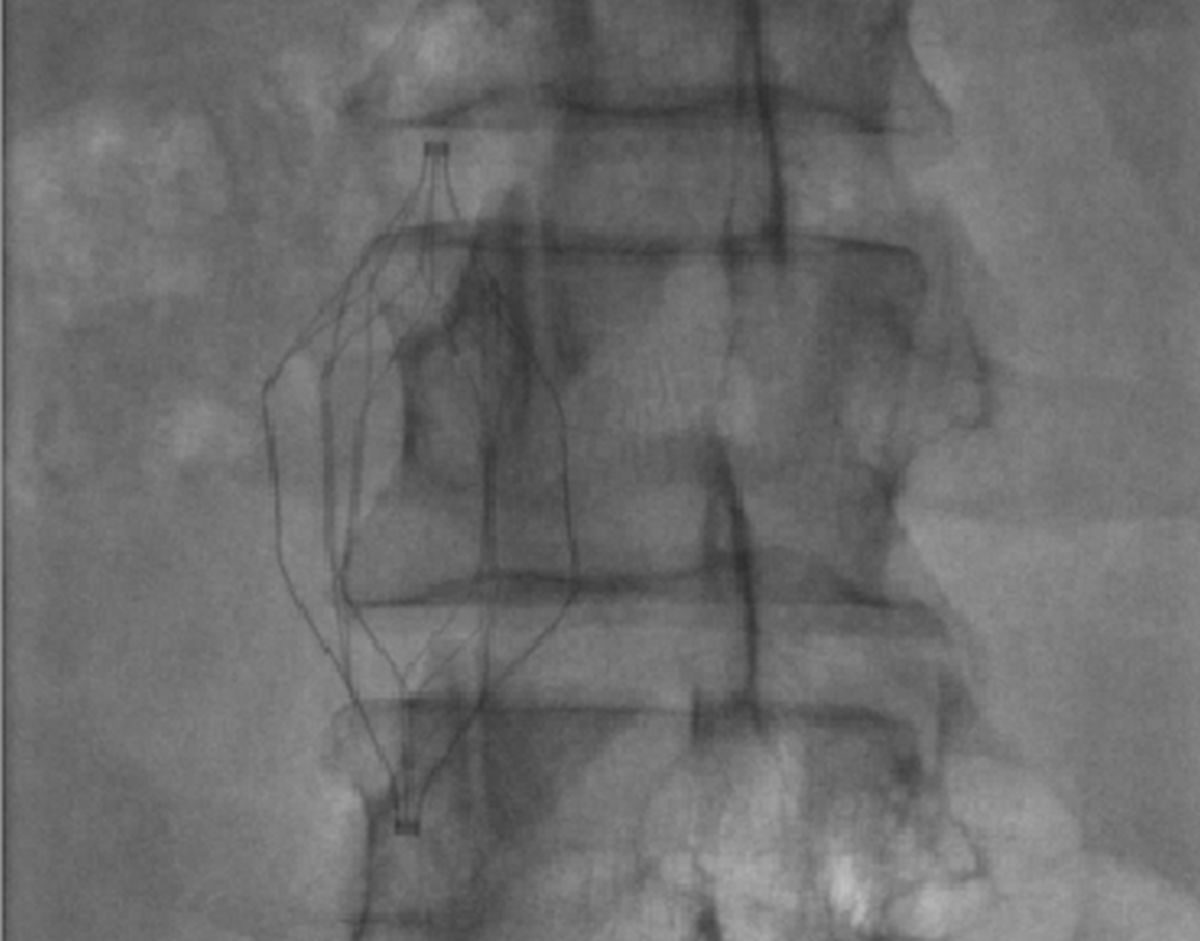Inferior vena caval filter deployment
Inferior vena caval filter deployment
Inferior vena caval filter deployment: Inferior vena caval filters are deployed for prevention of pulmonary embolism in the face of venous thrombosis. It is considered for secondary prophylaxis after an episode of massive pulmonary embolism. The filter deployment can be either temporary (retrievable filter) or permanent. Inferior vena caval filter (IVC filter) deployment is favoured when there are contraindications for anticoagulant therapy. IVC filter can also be temporarily deployed for prevention of pulmonary embolism while thrombolysing deep vein thrombosis, especially when a large mobile clot has been demonstrated by ultrasound evaluation.
IVC filters can be deployed by the transfemoral or the trans jugular route. Trans jugular route is used when the femoral veins are loaded with thrombus or when there is a vascular access problem from the lower limb. Retrievable filters have a hook which is directed upwards, facilitating retrieval by the trans jugular route. The filter is deployed with the hook directed upwards regardless of whether the deployment is by the trans jugular or trans femoral route.
In the trans femoral route, the femoral vein access is obtained by percutaneous puncture and a diagnostic catheter is used to take a preliminary inferior vena cavagram. The entry points of the renal veins are localized by probing and selective injection of contrast. The diagnostic catheter is removed and a sheath is introduced over a guide wire. The IVC filter device is then introduced and positioned below the renal veins using check shots of contrast. The sheath is withdrawn gradually to deploy the filter. Further check venograms are taken to confirm the position of the filter as well as the inferior vena caval flow. Filter retrieval can be done within a period of three months if needed. Retrieval is usually done from the transjugular route as the hook is in the upper part of the filter. The hook is caught and the filter gradually withdrawn back into the sheath before pulling out of the venous system.
IVUS guided bedside IVC filter deployment
Bedside IVC filter deployment using intravascular ultrasound (IVUS) guidance has also been described [1]. In this study they compared the technical factors in 97 IVUS guided and 98 fluoroscopy guided IVC filter deployments. They found that IVC filter malposition was more likely with left femoral venous approach compared to jugular and right femoral venous approach. Hence they recommended avoiding the left femoral venous approach.
Reference
- Hodgkiss-Harlow K, Back MR, Brumberg R, Armstrong P, Shames M, Johnson B, Bandyk DF. Technical factors affecting the accuracy of bedside IVC filter placement using intravascular ultrasound. Vasc Endovascular Surg. 2012 May;46(4):293-9.